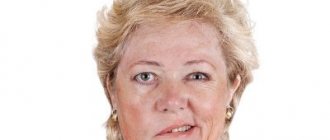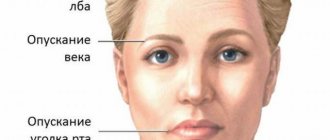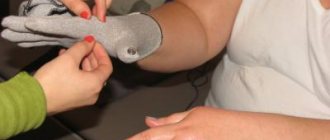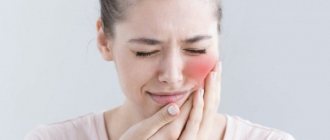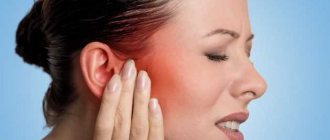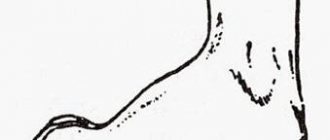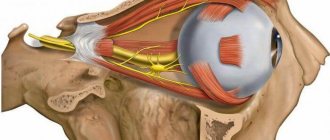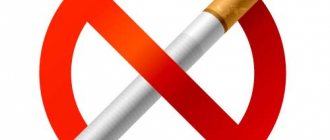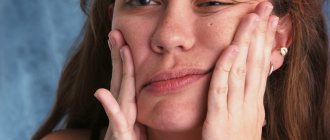Neuritis of the facial nerve responds well to complex therapy. Motor rehabilitation is successful in most cases. Exercise therapy for neuritis of the facial nerve plays a significant role in this. The article is useful not only for those who have suffered from facial nerve neuritis, but also for healthy people, since knowledge makes it possible to value and take care of your health, and promptly treat those diseases that can cause complications in the form of facial nerve neuritis.
Neuritis of the facial nerve is a lesion of the facial nerve, which is manifested by paralysis of the facial muscles and masticatory muscles on one side, sometimes on both sides, and occurs at any age.
The causes of neuritis of the facial nerve are: hypothermia, otitis media (inflammation of the middle ear), cerebrovascular accident (cerebrovascular accident), fracture of the temporal bone, tumor in the brain (cerebellopontine angle), infectious diseases (herpes, tick-borne encephalitis), intoxication.
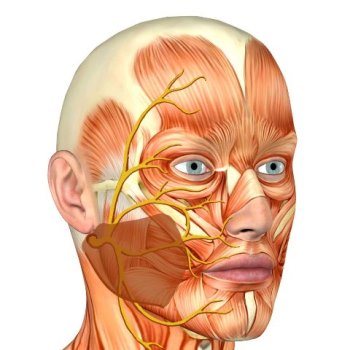
The facial nerve belongs to the autonomic parasympathetic nervous system, is formed by the 7th pair of cranial nerves, its nuclei are located in the pons of the brain, from the pons the nerve exits to the base of the brain, enters the internal auditory canal, passes through the temporal bone in the facial canal and exits through the stylomastoid hole, dividing into several branches.
The facial nerve has a mixed functional role. It provides motor innervation to all facial muscles, masticatory muscles, the broad subcutaneous muscle of the neck, the posterior belly of the digastric muscle, the stylohyoid muscle, the sensitive (taste) innervation of the anterior 2/3 of the tongue, the secretory innervation of the lacrimal gland, the submandibular and sublingual salivary glands.
Clinic of neuritis of the facial nerve. The beginning is acute. Paresis of facial muscles like flaccid paralysis, pronounced asymmetry of the face due to the fact that the muscles of the “healthy” half pull the muscles of the “sick” side to their side. On the affected side, the patient cannot raise an eyebrow, wrinkle his forehead, close his eyes, and the nasolabial sweetness is smoothed. When trying to smile, the mouth pulls in the healthy direction. Hypesthesia (reduced sensitivity) on the affected side.
In the first 4 days, the phenomena of paresis may increase, then the neurological symptoms stabilize, and from the second week the restoration of the motor function of the facial muscles begins. Movement is usually restored within a month.
In 15% of cases, neuritis of the facial nerve causes complications: inflammation of the eye mucosa and contracture of the facial muscles, when flaccid paralysis turns into spastic paralysis (approximately 1.5 - 2 months from the onset of the disease). In this case, the face will be skewed towards the “sick” side, the patient will feel twitching on the sick side, and muscle tone will be increased. Contracture of the muscles of the paralyzed side is considered the most severe complication, which is very difficult to correct.
!Prevention of contracture consists in the correct implementation of electrical procedures, therapeutic massage and exercise therapy.
You cannot overdose on the load. If the patient has twitching on the painful side, especially in the corners of the eye, then the massage is canceled and exercise therapy is canceled after consulting a neurologist.
At the very beginning of the disease, therapeutic massage is prescribed after stabilization of the condition, exercise therapy - from the first day.
The purpose of exercise therapy for neuritis of the facial nerve is to improve blood circulation in the neck and head, relax the muscles on the healthy side and stimulate the muscles on the sore side.
Exercises for neuritis of the facial nerve are performed according to the rules:
1). Make sure that in each exercise only those muscles that produce the movement are worked; all other muscles should be relaxed. That is, you cannot, for example, frown your eyebrows when baring your teeth, since new neural connections are created and in the future friendly facial movements will appear, which are undesirable, and it is very difficult to correct this.
2). Pay attention to the quality of the exercises, helping to “correct” your face with your hands and achieve facial symmetry.
3). After performing a certain movement, the facial muscles need to be relaxed.
4). You can first do the exercise mentally, and then do it actively. This will help you concentrate and perform the exercise correctly. Exercises performed mentally additionally activate the nervous system.
5). A good technique for restoring a smile is to make the patient laugh by telling a joke. We hold the healthy side of the face with our hand to relax the muscles. We warn you in advance that it will be funny now, and you should try to concentrate your attention on the affected side of the face.
Recommendations for the treatment of facial neuritis:
DENAS therapy and Su-jok therapy will help to enhance the effectiveness of exercise therapy for neuritis of the facial nerve
For the use of DENAS therapy at home, consult an experienced acupuncturist.
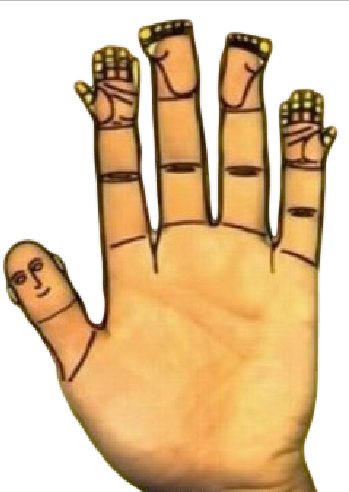
Su-jok therapy has a variety of methods for treating diseases. The simplest method, accessible even to preschool children, is to depict a healthy, smiling face on the pad of the thumb. On the hand we find the correspondence of the human body in the basic system on the hand, thumb - head. At this moment, the hand turns into a control panel for the body. Take a pen or marker and draw a face with a smile. This should be done every day, alternating brushes.
In Su-jok therapy, there are many systems of correspondence of the body (for example, insect, giraffe, yogi, etc.), the doctor chooses the system that is most convenient for treating a specific disease, where the desired organ is most clearly expressed and accessible; It is not recommended to combine different systems at the same time; only one system is used.
There is an option for using Su-jok - therapy for the treatment of neuritis of the facial nerve - the “Big Insect” system, described in the article “Therapeutic exercises for epilepsy.” In this system, the patient can exert an energetic effect on the body through ordinary self-massage of the hands, and it is easy to understand which area on the hands needs to be “calmed” and which one needs to be activated.
Therapeutic exercises for neuritis of the facial nerve.
LH is carried out individually or in a small group method while sitting on a chair in front of a mirror.
The set of exercises for neuritis of the facial nerve is divided into three parts:
1). Exercises for the shoulder girdle while sitting on a chair are included to improve blood circulation in the head and neck area. (For example, move your arm to the side and look at it; place your hands on your shoulders - rotate your arms clockwise and counterclockwise; raise and lower the upper shoulder girdle, and so on).
2). Special exercises are exercises for facial muscles: mouth, cheeks, eyebrows, eyes within the symmetry of the face, that is, during therapeutic exercises we try to prevent the face from skewing in the healthy direction. To do this, we intuitively hold the muscles on the healthy side with our hand, making sure that they do not work at full strength (in other words, the muscles on the healthy side of the face “play giveaway”), and on the sore side we tighten the muscles, achieving normal, full-fledged symmetrical movement. That is, we help “correct” the face with our hands.
3). We definitely include exercises for the articulatory apparatus with the pronunciation of sounds and words. We combine five vowel sounds (a, o, u, i, y) with various consonant sounds, but the obligatory ones are b-p, v-f, m, since these are the sounds that help to maximally use the facial muscles. It is important not just to pronounce sounds, but to train the articulatory apparatus, so we achieve expressive lips for each sound.
| A | ABOUT | U | AND | Y | |
| B | BA-BA, AB-AB | BO-BO, OB-OB | BU-BU, UB-UB | BI-BI, IB-IB | WOULD-WOULD, YB-YB |
| P | PA-PA, AP-AP | PO-PO, OP-OP | PU-PU, UP-UP | PEE-PEE, IP-IP | PY-PY, YP-YP |
| IN | VA-WA, AB-AV | VO-VO, OV-OV | VU-VU, UV-UV | VI-VI, IV-IV | YOU-YOU, YV-YV |
| F | FA-FA, AF-AF | FO-FO, OF-OF | FU-FU, UV-UV | FI-FI, IF-IF | FY-FY, YF-YF |
| M | MA-MA, AM-AM | MO-MO, OM-OM | MU-MU, UM-UM | MI-MI, IM-IM | WE-WE, YM-YM |
In addition, it is necessary to practice pronouncing words syllable by syllable. For example, milk, hut, thekla, beet, doll, snail, audience, bagels, air, drum(s), stick(s), grandmothers, cone, cat, kidney, barrel, boy, barefoot, beads, shoes, toys, raisin, cuckoo, grandma, folder, mother, slippers, puma, etc.
Then, when the condition improves, we include reading children's fairy tales in front of the mirror in order to control the symmetry of the face while reading and the expressive position of the lips when pronouncing sounds.
Introduction to the topic
Our health directly affects our smile. Even without medications, exercise therapy gives good results. It all depends on the diligence of the patient.
Facial neuritis is an inflammatory lesion of the seventh pair of cranial nerves. The facial nerve includes motor branches that innervate the facial muscles, and the intermediate nerve responsible for the innervation of the stapedius muscle, lacrimal gland, and taste sensitivity of the two anterior thirds of the tongue.
For a favorable course of the disease and restoration of the functions of facial muscles, long-term therapy is necessary, combining pharmacological and non-pharmacological methods. A mandatory component of the complex treatment of facial neuritis is gymnastics. In the article below we will discuss: the pros and cons of classes, features, whether preparation is needed before gymnastics, and we will consider some exercises.
Weakening of the muscles of one half of the face, the inability to control facial expressions, and perform chewing movements - all these are manifestations of neuropathy of the facial nerve. The nerve ending from the brain exits into the narrow ear canal, so any swelling or compression due to damage to the jaw can lead to unpleasant consequences.
The causes of the disease can be infectious diseases, bruises and damage to the temporal lobe, otitis media, viral diseases, and blood circulation disorders.
You can cope with the symptoms and prevent the consequences of such lesions with the help of exercise therapy of the facial nerve. A set of exercises is prescribed by the doctor, based on the area of the lesion and the reasons for the manifestation of such a symptom.
Exercises for neuritis of the facial nerve.
1). raise and lower eyebrows, 2). frown, 3). be surprised, upset, 4). smile with your mouth closed, with your mouth open, 5). bare your teeth, 6). blow, 7). whistle with lips pursed, 8). blow out the candle, 9). upper lip to lower lip, 10). lower lip to upper lip, 11). open and close your eyes (closing your eyes occurs in the following order: look down without lowering your head, close your eyes, helping to close the eyelid on the paralyzed side of your face with your hand, sit like that for 1 minute, repeat 2 more times), 12). close your eyes, 13). open your eyes wide, 14). squint, 16). alternately close one or the other eye, 17). follow with your eyes the finger moving in a circle clockwise and counterclockwise, 15). say “Whoa-whoa!” - sound when a horse is stopped, 18). snort, 19). widen the nostrils, 20). puff out your cheeks, 21). move the air in the mouth from one side to the other, inflating the cheeks alternately, 22). suck in your cheeks with your mouth closed, 22). rinse your mouth with water, 23). stretch out your lips with a tube, “kiss”, 24). Use your tongue to “brush” your teeth with your mouth closed. 25). move the tip of the tongue forward and backward across the palate with the mouth closed, 26). swing your tongue right - left with your mouth open, 27). draw circles with your tongue clockwise and counterclockwise with your mouth open, 28). swing your tongue back and forth with your mouth open, 29). “Needle”: stick out your tongue, making the tip sharp, 30). click your tongue, imitating the sound of hooves, while the tip of the tongue presses against the palate, sliding back, 31). roll the tongue into a “pupa”, turning the edges of the tongue towards the center.
Finally, I would advise that in everyday situations, when you need to talk with someone or want to laugh, hold your healthy side with your palm, calming it in order to prevent excessive distortion of the face.
In my practice, I have always used the simplest treatment methods of Su-jok - therapy before therapeutic exercises, which was carried out after massage of the collar area, neck and face. There were never any complications in the form of contracture; there was always an improvement or complete recovery. In this I attach great importance to Su-jok therapy, low bow to Professor Park Jae-woo, who discovered this miracle for people.
And, of course, successful recovery depends on the hard work of the patient himself. As a rule, there are no lazy people, since all patients with neuritis of the facial nerve want to correct the facial defect.
In the hospital, you can get advice: while sleeping, place your palm under your cheek on the painful side. I doubt the need for this, since the yin-yang energies of the hand are of no small importance here: the palm side is yin, the back side is yang. The paralyzed side needs to be activated, so yang energy is required. Nothing bad will happen if the patient sleeps on his palm, but this should not be done specifically for therapeutic purposes.
You will find the articles “Inner Smile Technique”, “Eye Exercises”, “Assistant Physical Therapy for Diseases of the Nervous System”, “Exercises for Fingers” useful.
I wish a speedy recovery!
Period of residual effects
Sometimes the consequences of neuritis do not go away completely due to incomplete passage of the nerve impulse. Then you need to continue the exercises of the main stage with the addition of bending and shaking your head from side to side.
Trigeminal neuralgia is one of the most common diseases of the peripheral nervous system. It is known for its excruciating pain that prevents normal functioning.
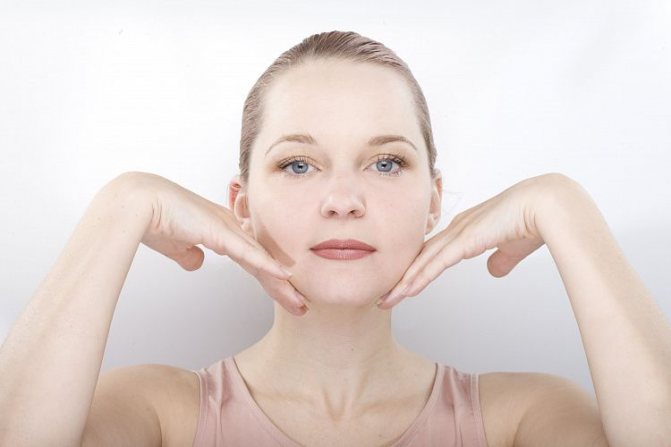
You can read about how to deal with inflammation of the trigeminal nerve and the resulting pain syndrome at home in this material.
Anticonvulsants for trigeminal neuralgia are a real salvation. They have a calming and relaxing effect, and most importantly, reduce severe pain.
Recommendations for the patient
Regular exercises give results after 2-3 sessions. Positive qualities are:
- Improving blood circulation in the affected area;
- Return to normal;
- Stimulation of biologically active points located;
- Normalization of the nervous system, facial and motor abilities;
- Calming, relaxing tense areas;
- Relieving inflammation.
The main recommendation is to wear a special corset. The measure helps speed up the recovery process. It is necessary to provide support for paralyzed muscles. It is used for one or two weeks at night. During the day it is necessary to massage for neuritis.
There are several recommendations that it is advisable to follow when performing exercises to eliminate the effects of inflammation:
- Laughter restores a smile. You can watch funny programs, read jokes. You need to prepare for laughter and hold the unaffected part of your face with your hand in advance to prevent the occurrence of asymmetry.
- To further activate the nervous system, it is advisable to do it in your thoughts before performing muscular exercises. Experience shows that this enhances the effect.
- After each exercise, you need to take a short break to relax your muscles.
- Exercise therapy should be done with concentration, monitoring the behavior of the muscles, helping them with your hands to prevent the appearance of asymmetry.
- Each muscle group has its own exercises; it is important to ensure that only they participate in the process. The rest of the face should remain relaxed. For example, if you bare your teeth, you don’t need to raise your eyebrows at the same time. This will lead in the future to the emergence of new friendly facial movements, which are very difficult to correct.
As already mentioned, neuritis of the facial nerve requires an integrated approach. Doctors recommend carrying out Su-jok therapy and DENAS therapy in parallel with exercise therapy. In both cases, you must first contact an appropriate specialist for recommendations on how to use the methods at home.
Another effective technique that can be used to eliminate the problem is positional treatment. For this purpose, taping is applied to the face - a special patch.
Also, during the treatment process, doctors recommend that patients take the following actions:
- Restore symmetry by tying a scarf. Healthy muscles should tighten in such a way as to match the affected ones. The latter, in turn, should remain relaxed.
- 3-4 times a day, take this position: the elbow is placed on a support, the palm is turned with the back side up, the head is leaning on it with the affected side. You should sit in this position for 10-15 minutes.
- When eating, make chewing movements on both sides of the mouth.
- While sleeping, lie on your side on the problematic side.
Gymnastic exercises should be carried out in stages so as not to injure muscles and nerves.
The disease imposes restrictions on lifestyle:
- do not overcool;
- speak little and quietly;
- eat in small portions, chew on both sides.
There are general rules for conducting therapeutic physical training for neuritis of the facial nerve:
- exercises are done in front of a mirror;
- each time those muscles that produce a certain movement must be involved. For example, when smiling you should not frown;
- You can first do the exercise mentally, then in practice.
Patient reviews
Diagnostic accuracy and quality service are the main priorities of our work. We value every review our patients leave us.
Panina Valentina Viktorovna
Actress, Honored Artist of the RSFSR
I found out about you on the Internet - I urgently need an MRI.
And after the performance I’m with you. I really liked your staff. Thank you for your attention, kindness and accuracy.
May everything be as good in your soul as I am now, despite all the problems.
Be. We're happy! Your Panina V.V.
Russian rock musician, film actor, TV presenter and artist.
Ts.M.R.T. "Petrogradsky" thank you!
Thank you very much for such good, professional service in your clinic. Nice, comfortable! Great people, great conditions.
I would like to thank the staff for their attentive and friendly attitude. It’s good that at least you have such a clinic.
Everything is very competent, very friendly service. I will recommend this clinic to my friends. Good luck.
Very responsive administrator. Polite, cultured, kind.
I express my great gratitude to the administrator Kristina and Rinat Chubarov for their attentive and friendly attitude during the examination; I wish there were more such personnel, which is a rarity these days.
I express my deep gratitude to Ekaterina Korneva for her patience, professionalism, kindness and fantastic attitude towards patients.
Thank you very much for the consultation and examination. She was very polite, accessible and explained the process and results in detail.
